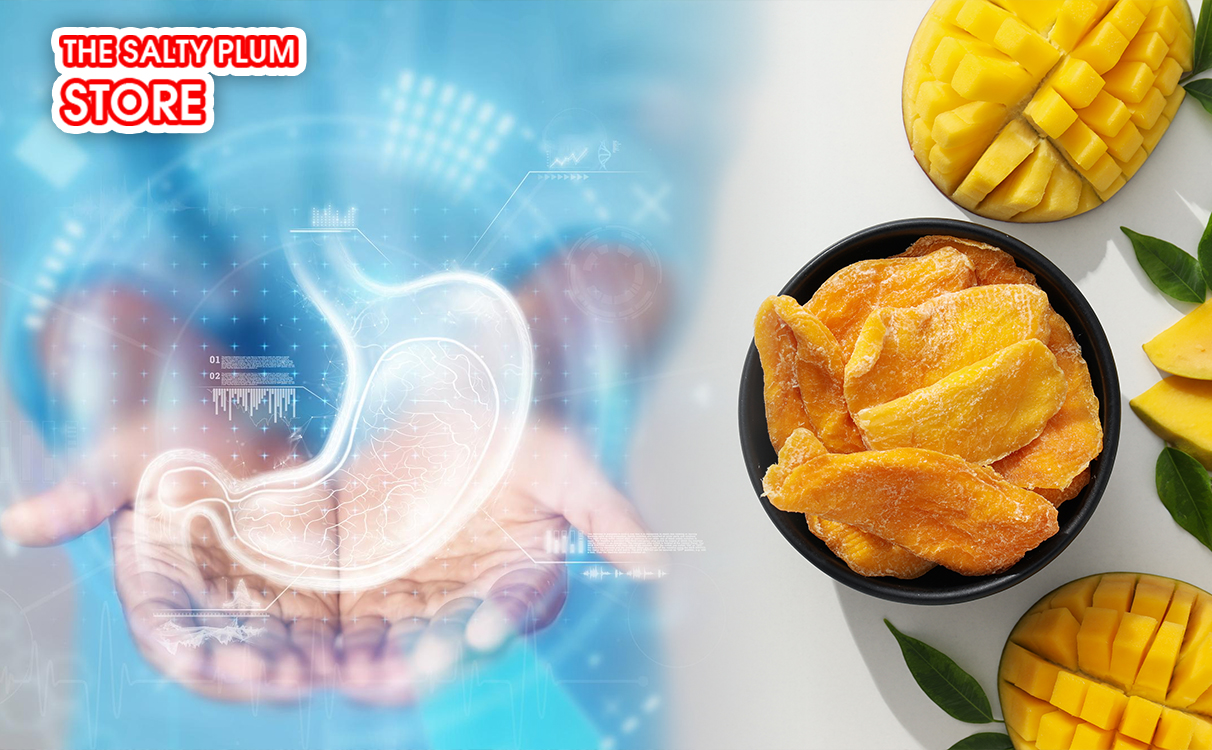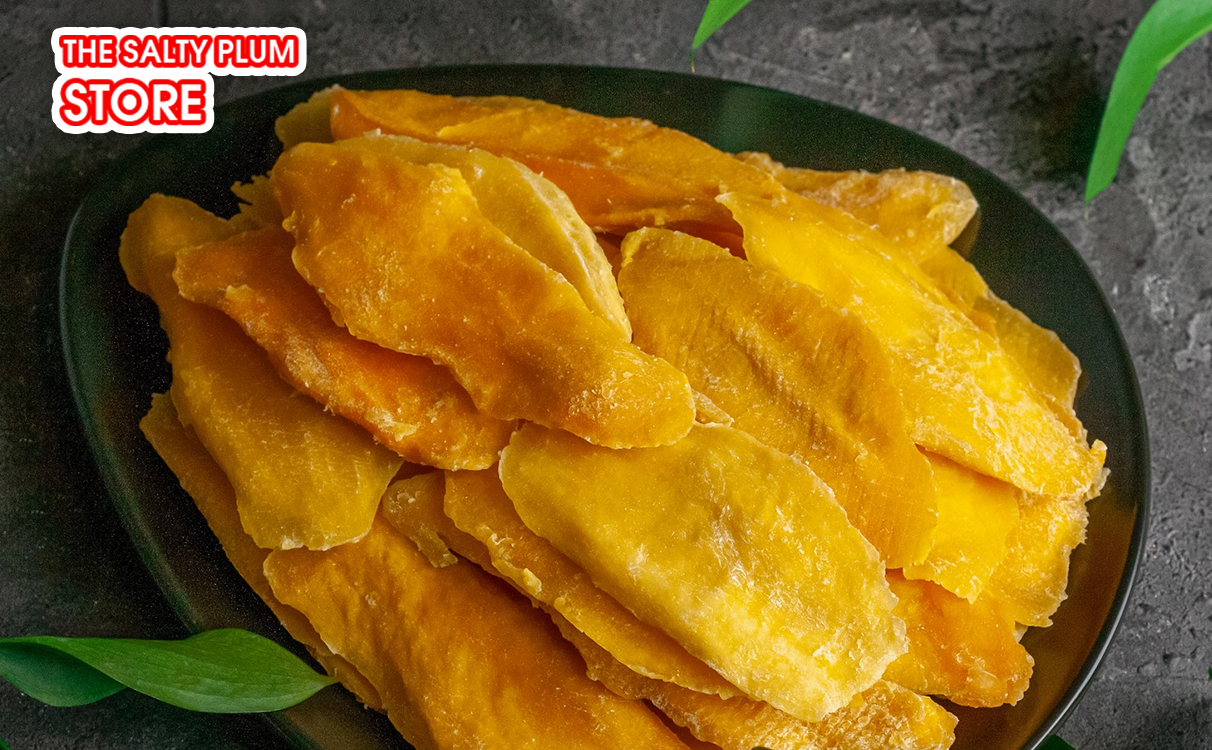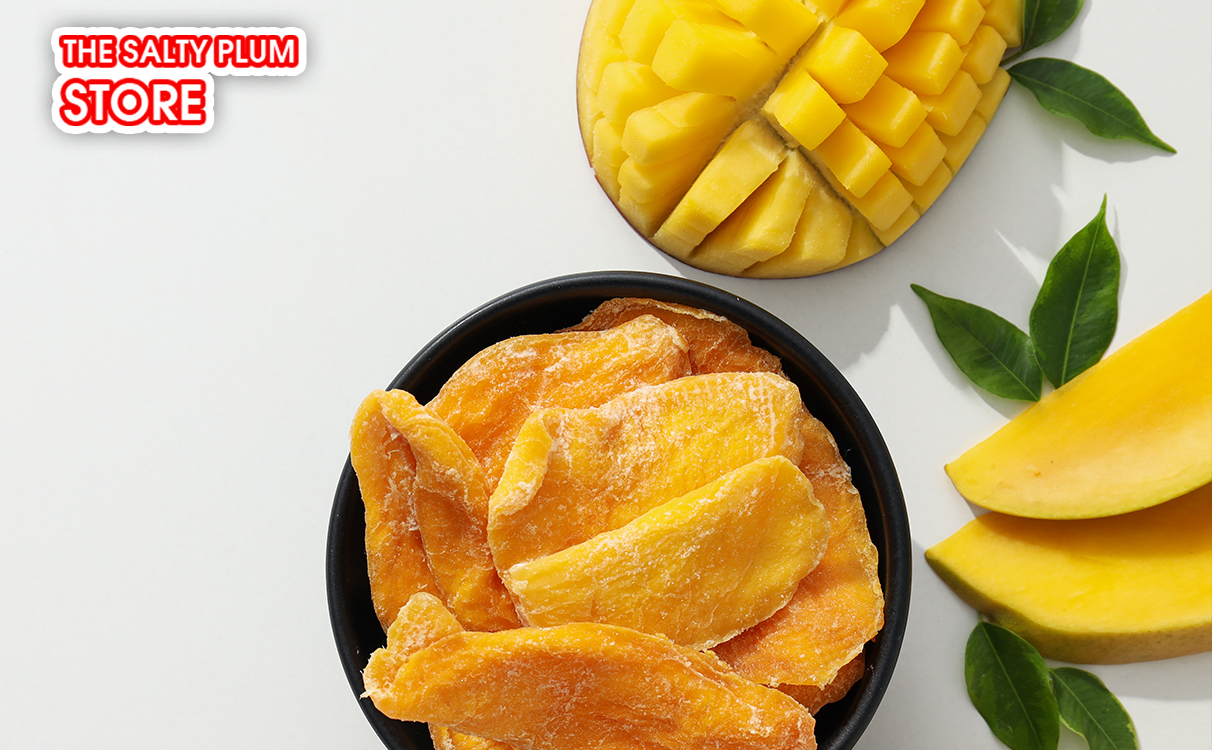Dried mango is more than just a delicious and convenient snack, it’s a nutrient-rich treat that packs a natural punch of flavor and health benefits. One of its standout components is dried mango fiber, a key contributor to digestive health, weight management, and overall well-being. Whether you’re looking to improve your gut health, maintain steady energy levels, or simply enjoy a sweet yet wholesome snack, dried mango fiber offers a simple and tasty way to support your daily nutrition. Let’s explore how much fiber is in dried mango, the health benefits it provides, and practical ways to include it in your diet.

I. How Much Fiber Is in Dried Mango?
Fiber is an essential nutrient that plays a crucial role in maintaining digestive health, regulating blood sugar levels, and supporting overall wellness. Among natural snack options, dried mango stands out for its concentrated fiber content, making it a tasty and beneficial addition to your diet.
A typical serving of dried mango about 30 to 40 grams, roughly a small handful, contains approximately 2 to 3 grams of fiber. This may seem modest, but compared to fresh mango, the fiber content is significantly more concentrated. On a 100-gram basis, dried mango provides nearly three times the fiber of its fresh counterpart because the drying process removes most of the water, concentrating both natural sugars and dietary fiber.
II. Health Benefits of Fiber in Dried Mango
1. Digestive Health
Dried mango fiber plays a vital role in supporting a healthy digestive system. It helps regulate bowel movements, preventing constipation. In addition, the fiber nourishes beneficial gut bacteria, contributing to a balanced gut microbiome and overall digestive wellness.

2. Blood Sugar Control
Another significant benefit of dried mango is its ability to help stabilize blood sugar levels. Its soluble fiber slows the absorption of sugar into the bloodstream, reducing sudden spikes in blood glucose. This makes dried mango a smart snack choice for people with diabetes or anyone aiming to maintain steady energy throughout the day.
3. Weight Management
Fiber in dried mango can also aid in weight management. By creating a feeling of fullness, it helps curb unnecessary snacking and prevents excess calorie intake, making it easier to maintain a healthy weight.
4. Heart Health
The soluble fiber in dried mango supports cardiovascular health by helping lower cholesterol levels and improving blood circulation. Regular consumption may contribute to a healthier heart and reduced risk of cardiovascular issues.
5. Skin and Overall Wellness
Beyond digestion and heart health, dried mango fiber enhances nutrient absorption, supporting skin health and overall well-being. Combined with the fruit’s natural vitamins and antioxidants, it helps protect the skin, reduce oxidative stress, and promote a radiant, healthy appearance.

👉 Enjoy the natural sweetness and health benefits of premium dried mango from The Salty Plum Store, your perfect snack for energy and wellness!
III. How to Include Dried Mango Fiber in Your Diet
Incorporating dried mango into your daily diet is simple, delicious, and versatile. For a quick snack, enjoy 2–3 slices of dried mango between meals. This provides a concentrated source of fiber while satisfying sweet cravings in a healthy way.
You can also pair dried mango with other nutrient-rich foods to enhance both taste and health benefits. Try adding it to:
- Nuts such as almonds or cashews for a protein and fiber boost.
- Greek yogurt, which combines probiotics with the fiber in dried mango for digestive support.
- Breakfast cereals, salads, or smoothies, blending flavors while increasing fiber content.
When enjoying dried mango, it’s important to monitor portion sizes. Due to the concentration of natural sugars during the drying process, excessive consumption can contribute to high calorie or sugar intake.
For the best results, choose high-quality dried mango that is free from added sugar or sulfur. This ensures you get the maximum benefits of natural fiber while maintaining the fruit’s authentic taste and nutrition. Incorporating dried mango fiber this way makes it easy to support digestive health, blood sugar control, and overall wellness daily.

IV. Fresh Mango vs Dried Mango Fiber Content
When comparing fresh mango to dried mango, one of the most notable differences is their fiber content. Dried mango contains a concentrated amount of fiber due to the removal of water during the drying process. This means that per 100 grams, dried mango provides significantly more fiber than fresh mango, making it an excellent choice for boosting daily fiber intake.
On the other hand, fresh mango has a higher water content, resulting in lower fiber concentration. However, fresh mango excels in vitamin C content, providing a stronger antioxidant boost that supports immune health and skin vitality.
Each form has its advantages and considerations:
- Dried Mango: Convenient, long shelf life, and rich in fiber. It’s ideal for on-the-go snacking or adding to meals to increase fiber intake.
- Fresh Mango: Higher in vitamins, lower in calories, and less concentrated sugar, making it perfect for hydrating, refreshing snacks or fruit-based dishes.
When to choose which:
- Opt for dried mango when you want a portable, fiber-rich snack or to supplement your diet with extra dietary fiber.
- Choose fresh mango when you prefer a hydrating, low-calorie fruit with higher vitamin C content, especially during the warmer months or as part of a fruit salad.

V. Conclusion
Dried mango fiber plays a vital role in supporting digestive health, stabilizing blood sugar levels, and aiding in weight management. Its unique combination of soluble and insoluble fiber makes dried mango a convenient and nutritious snack that contributes to overall wellness.
To maximize these benefits, it’s important to choose high-quality dried mango that is free from added sugar and preservatives. This ensures that the natural fiber, vitamins, and antioxidants remain intact, providing a wholesome and healthful snack option.
Incorporating dried mango into a balanced diet, whether as a quick snack, in smoothies, salads, or paired with nuts and yogurt can help you enjoy its natural sweetness while boosting fiber intake and supporting your health goals. By making dried mango a mindful part of your daily nutrition, you can harness its full potential for long-term well-being.
